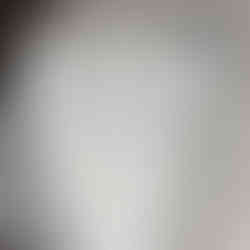Do It Yo-Self
- Alexandra Hutchinson
- Nov 26, 2022
- 3 min read
Updated: Jan 26

Hey everyone! It's been a couple weeks since I have added a new project just because I've been working on my embroidery project for a minute. However, I'm back with a new project! I have been trying to find a new duvet cover for my down alternative comforter that I have but I just couldn't find one that matched close to what I wanted. So, I've decided to create my own! I have this lightweight quilt comforter I've had for a couple months and decided to make it into a duvet cover. Overall, this project is simple to make so let's get into it!
I had a really tough time deciding just how I was going to achieve this idea and make it functional without messing it up. I decided the easiest option may be to take a queen sized flat sheet and stitch it onto the blanket, add a zipper, and boom it's workable. Now I had a plan just to execute this idea of mine. I picked up a sheet set that had a pattern I thought would fit the front pattern of the quilt just right. Now, how to plan for the closer. I've seen duvet covers that used buttons, zippers, etc. I opted for a zipper closer since I had it readily available to repurpose from my other duvet cover that I would no longer need. So I went through and ripped the seems off the zipper and pulled it from the old duvet cover.

I thought this process was going to be very tedious. However, once I got going I decided to try and just rip the zipper off and to my surprise it came off very easy and thankfully this process went a lot faster than I thought.
The stitching I used is a simple single stitch with white sewing thread. When you are stitching two fabrics together one of the things to remember is to always put the "faces" or fronts of the two pieces facing each other. The reason for this is because you will be flipping the fabric right side out and if you stitch the backs together you will have a product that is inside out. I will follow with pictures later on in this blog to help this make sense!
In the pictures below I show making sure that the "faces" are placed together to where the backs of the fabrics are technically the sides being stitched. The flat sheet I got is a little bigger than the quilt is, but that's ok I will trim once it is stitched together.
Once I got the two pieces stitched together now was the time to decide how I was going to place the zipper. I didn't want the zipper on the bottom edge of the cover so I opted to move it up about eight inches to a foot from the bottom edge. This zipper was the first one I've ever stitched into a project so to say I was nervous about it is a bit of an understatement. I had to make sure the entire time that I was stitching the correct edge onto the fabric because nobody wants an inside out zipper! I failed to get pictures during this process so I will debut the final project!
Here it is with the zipper working perfectly, whew!
If you have been here for a minute you can see my purple fabric wall I did is holding up great! If you haven't seen that post, be sure to check it out!
As always, if you have any questions or need help, feel free to reach out to me! Until next time...

_edited.jpg)













Comments